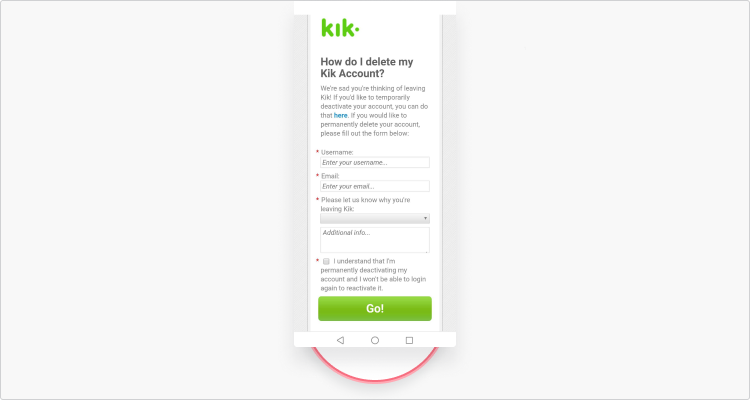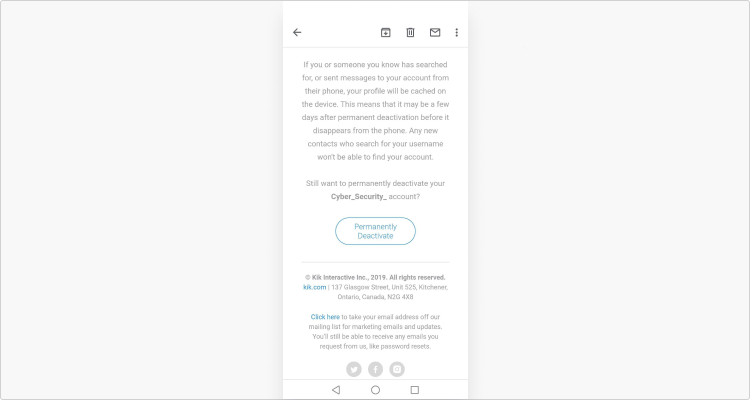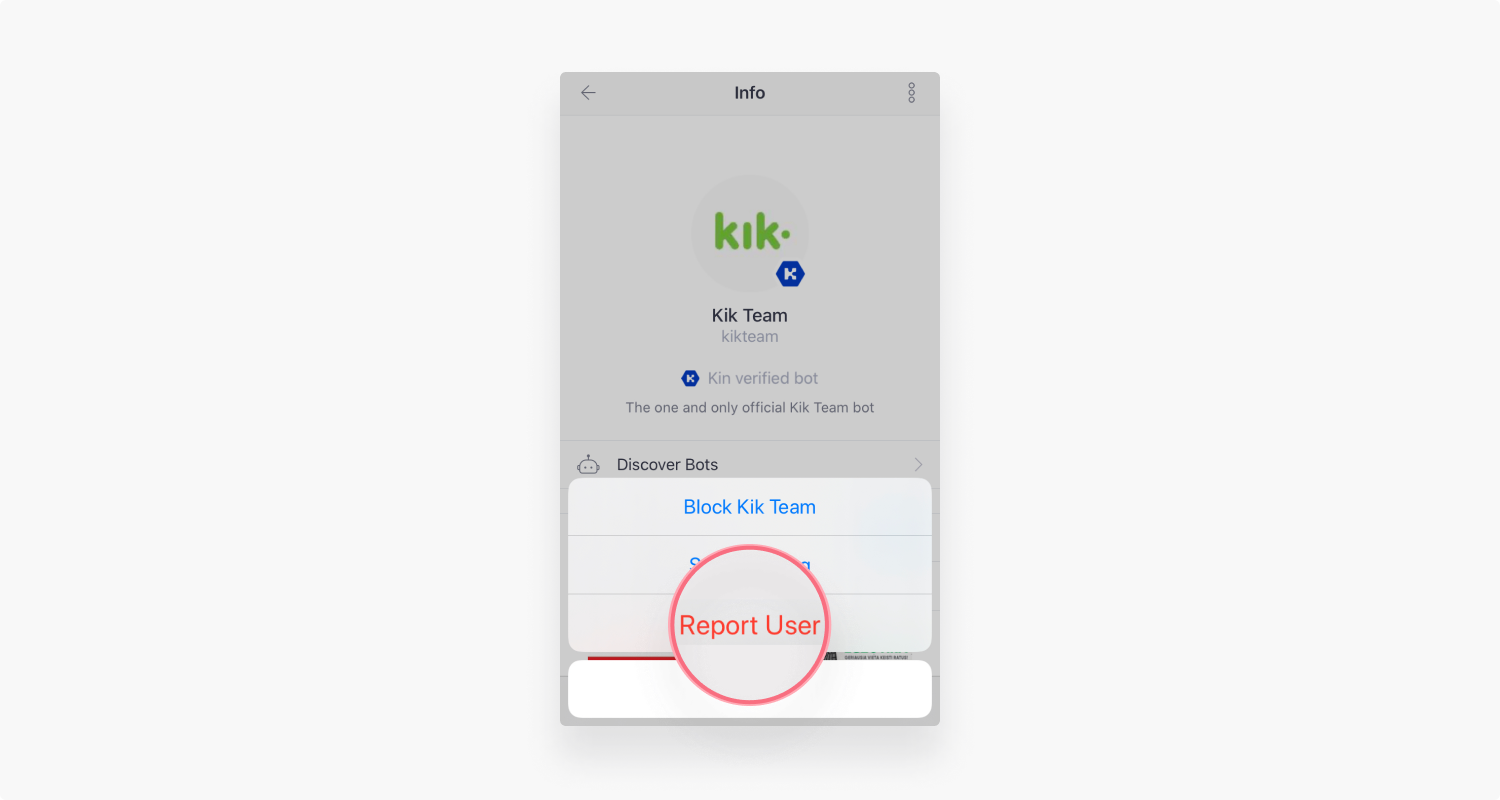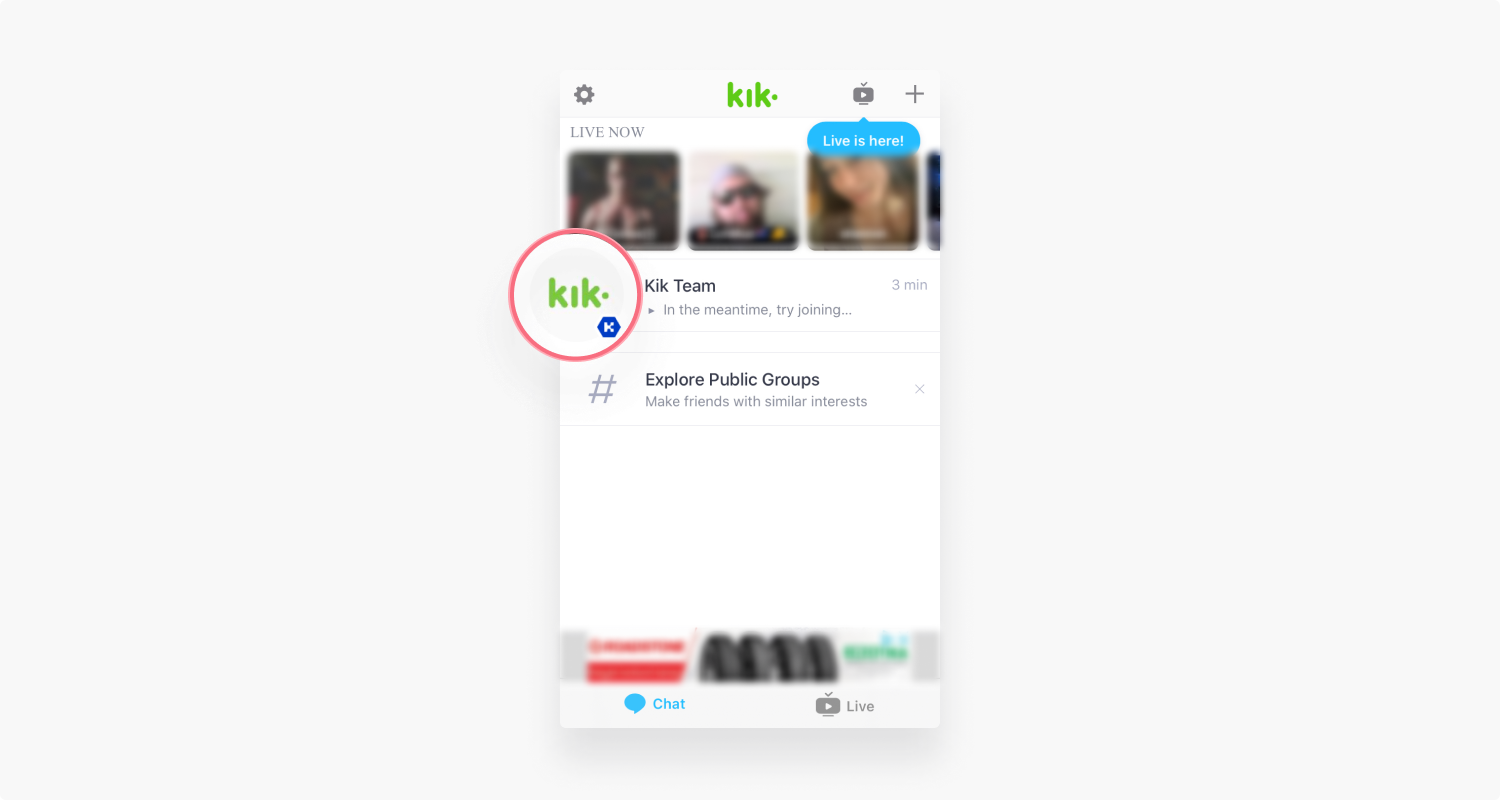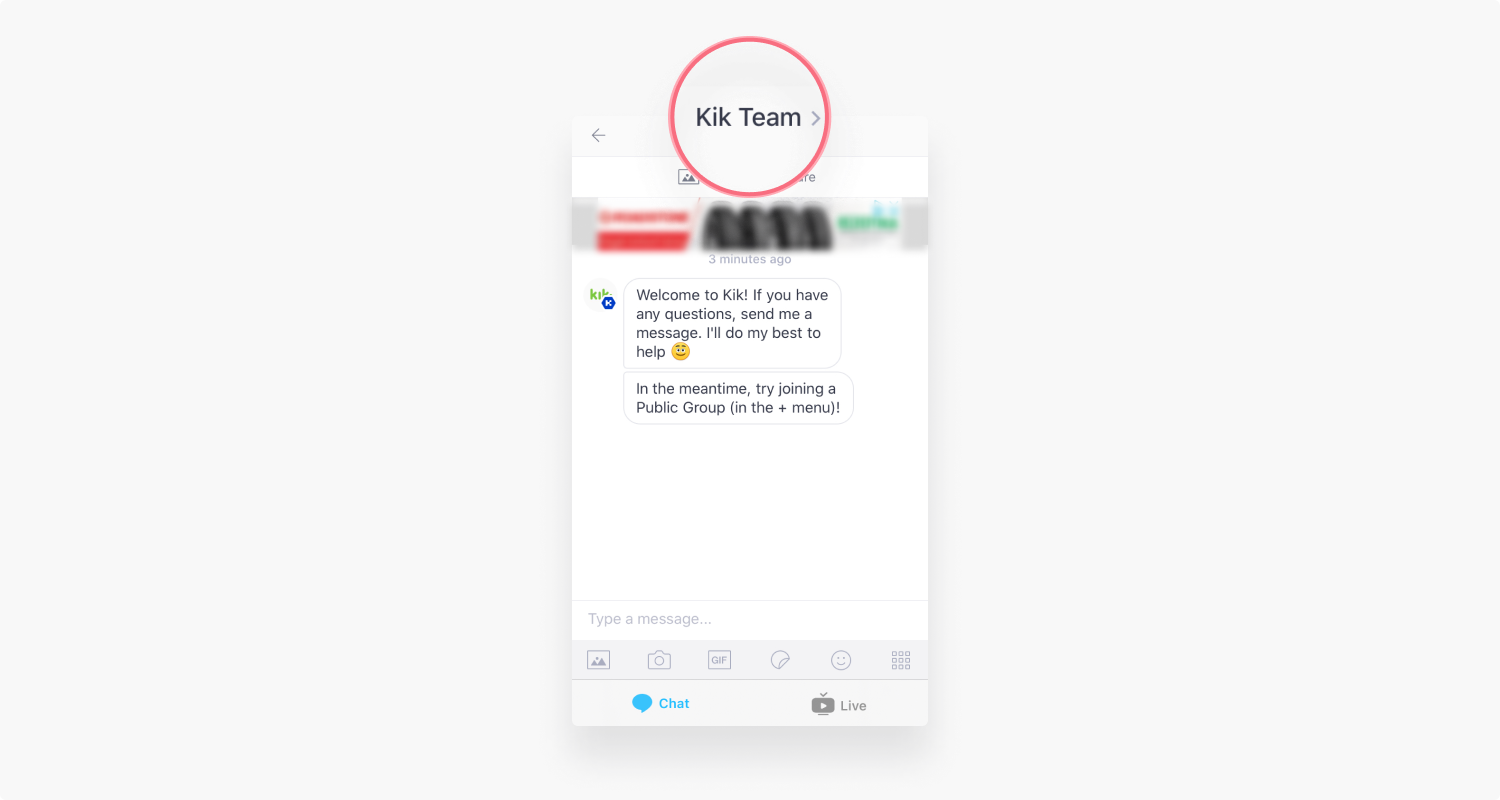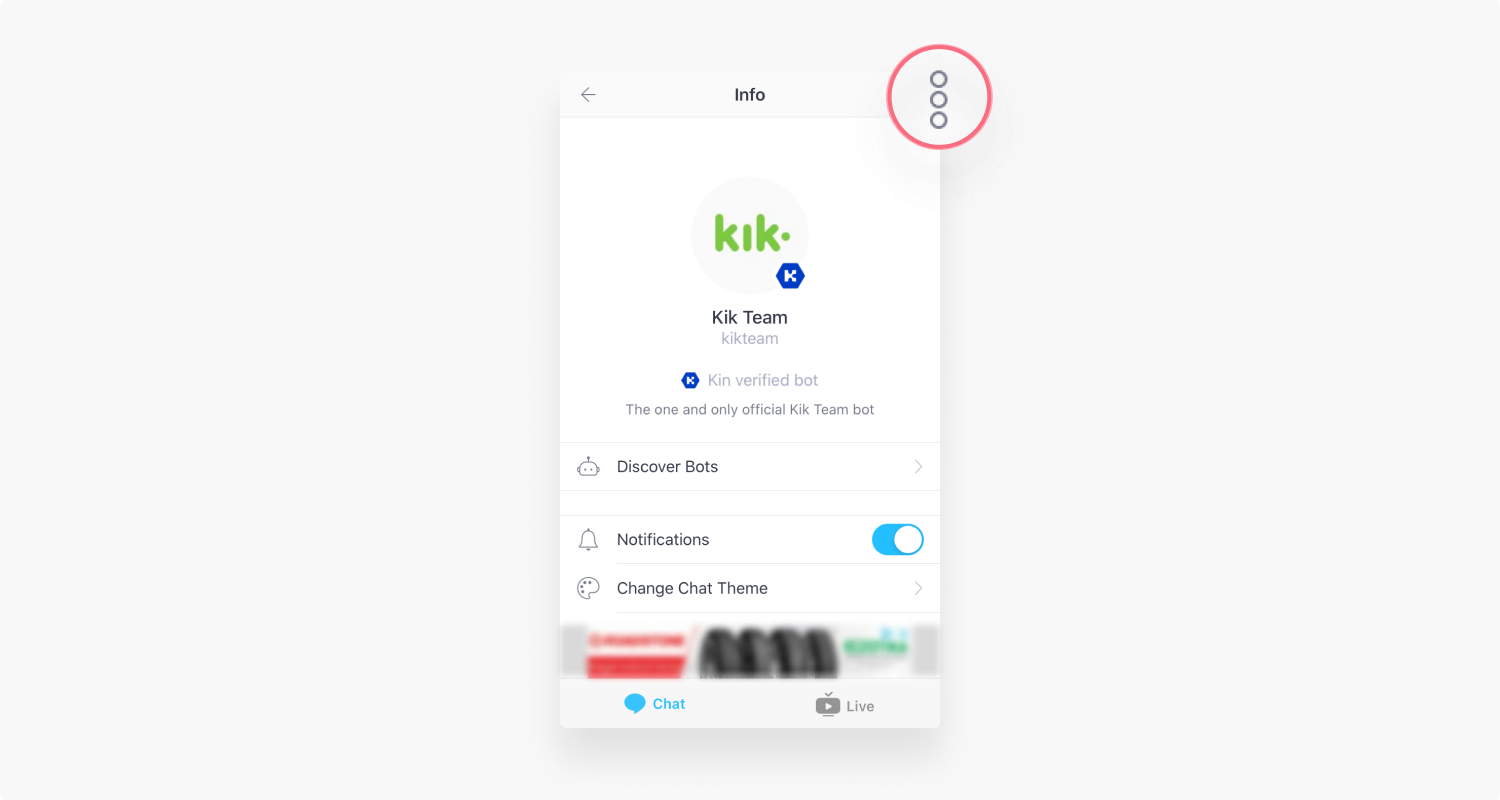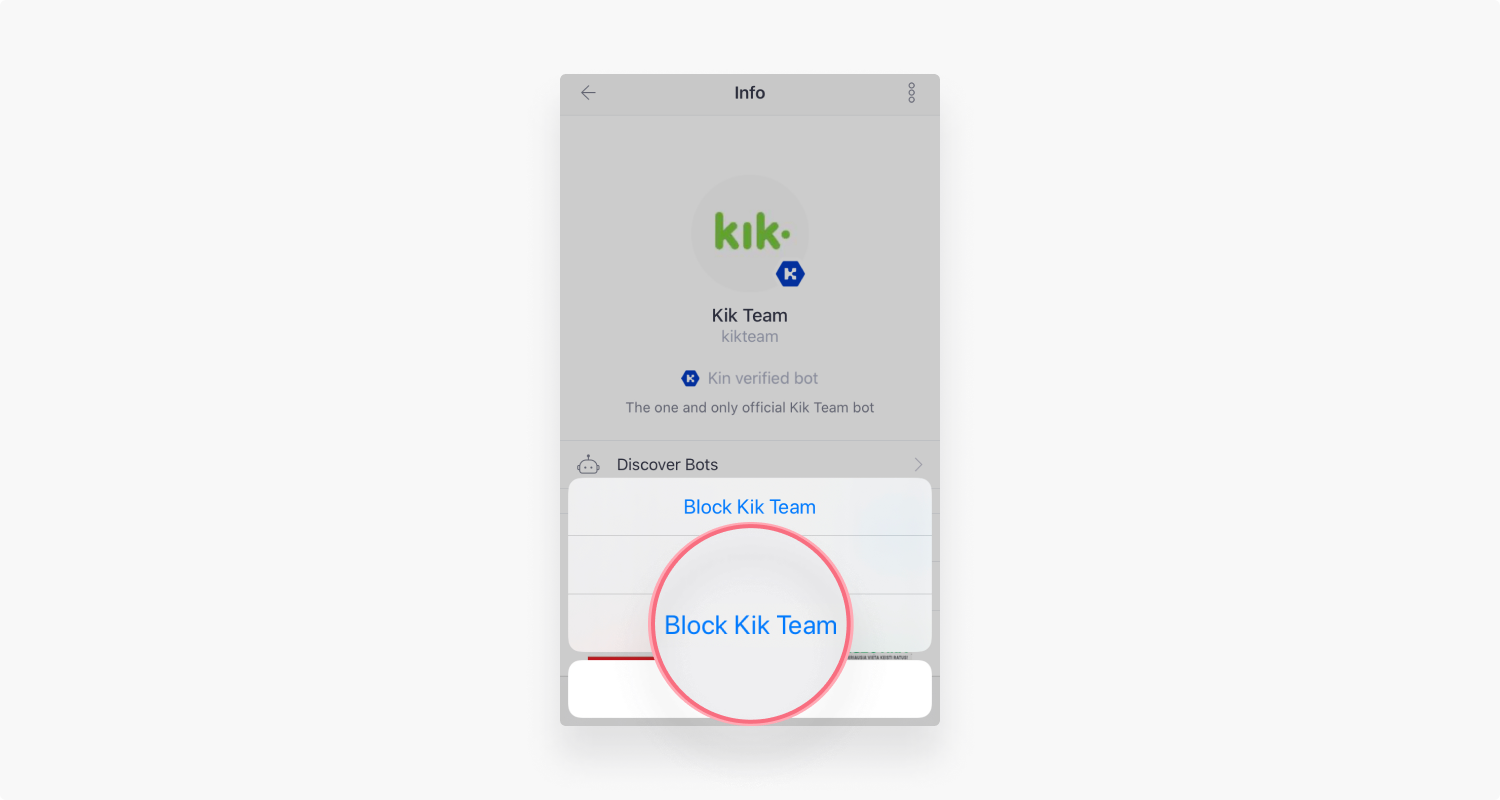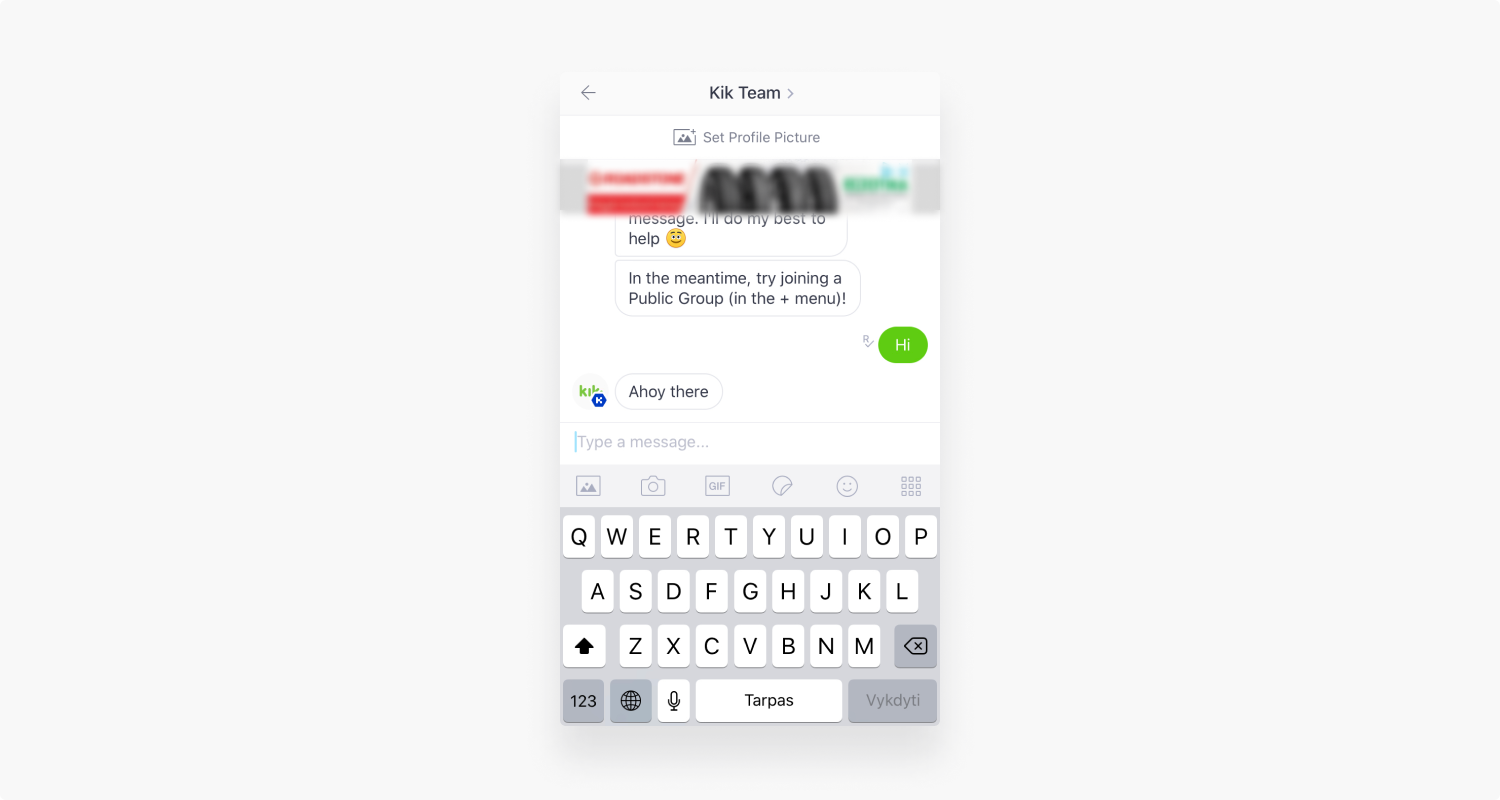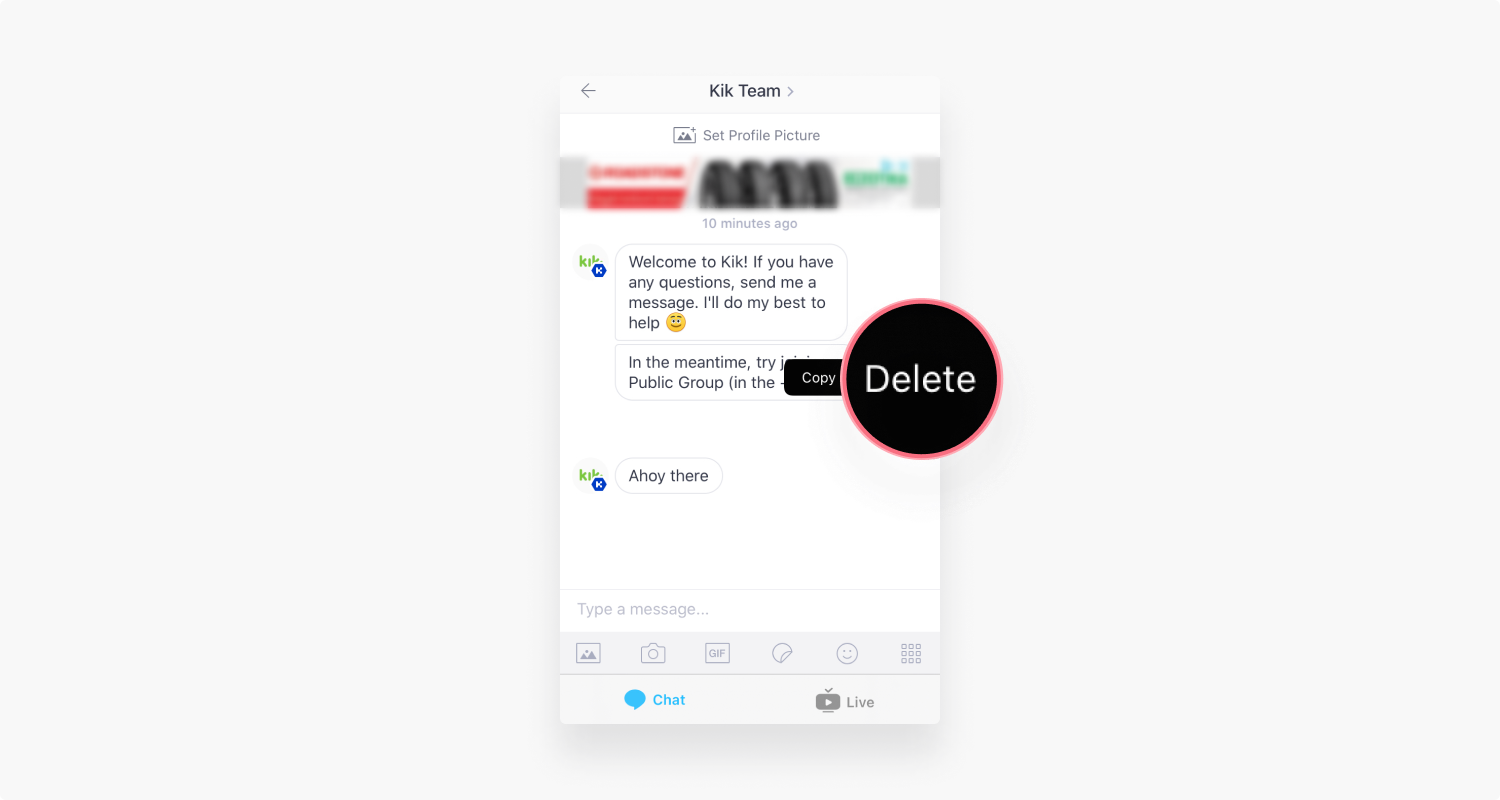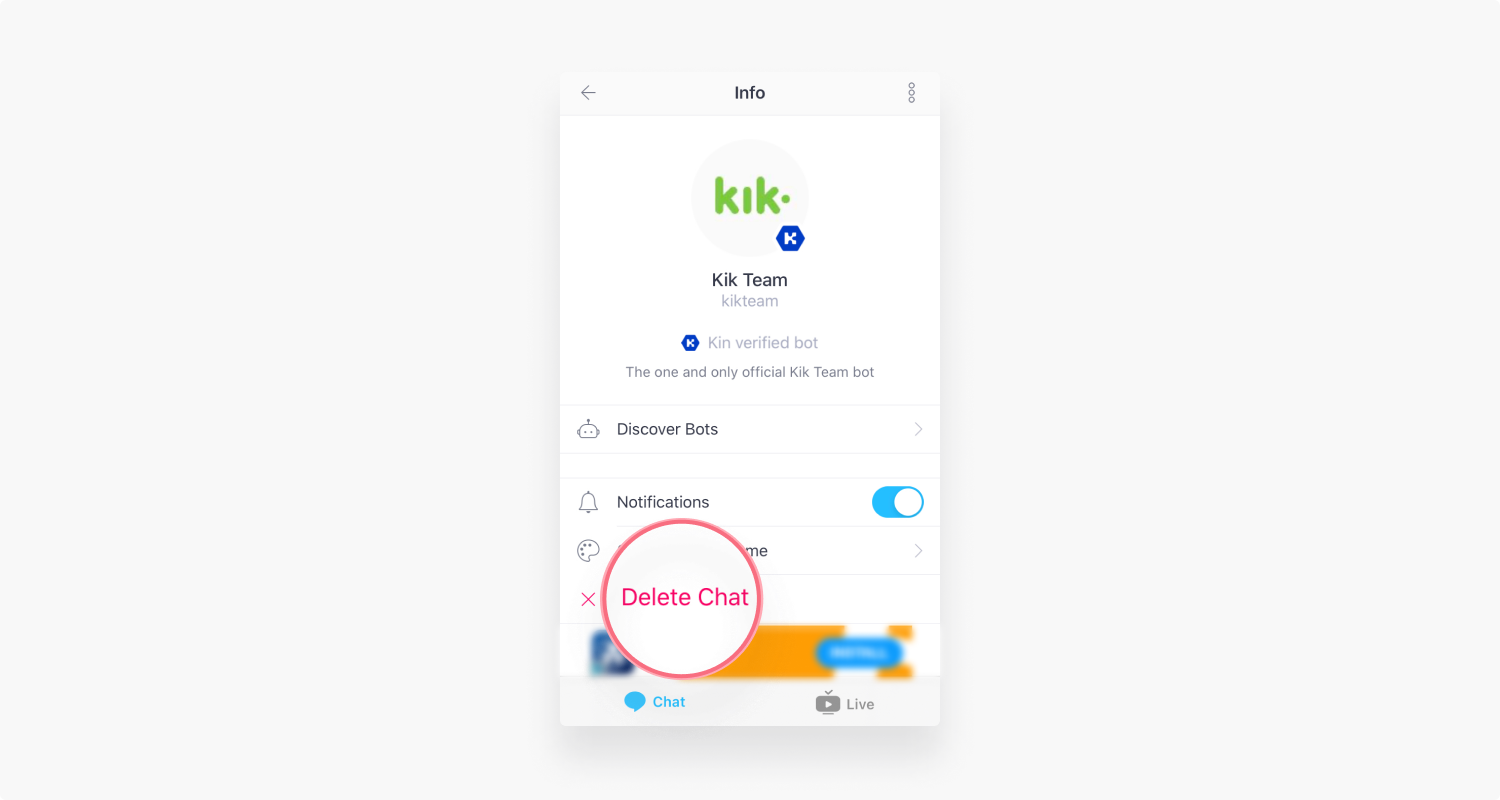How to delete Kik account
Kik is a messaging app, popular with young people. To protect them from dangers online, you may wish to delete or deactivate their account. In this article we’ll explain what Kik is, what risks young people face on it, and how you can delete a Kik account.
Table of Contents
Table of Contents
What is Kik?
Kik Messenger, also known just as Kik, is a free mobile messaging app for iOS and Android systems. You can use it to exchange private messages and share videos and photos with other users. It’s proven to be extremely popular with teenagers.
To use Kik you only need an email, birthdate, and username to login. That means other users see only minimum information about each other. The app also deletes messaging histories after some time. However, the app also has various privacy issues, including IP logging and a lack of end-to-end encryption.
Why should you delete Kik account?
There quite a few reasons to delete your Kik account:
- Exploitation and online threats. Child exploitation is a problem on any app that allows people to stay fairly anonymous. Kik and many other social media apps are no exception. Researchers also find it difficult to obtain data from the company to investigate these cases. The company has introduced stricter measures to tackle these threats, however.
- Lack of parental control applications. Teens can use Kik easily without their parents’ intervention. While minors should have parents’ permission to use the app, they can bypass this easily by entering a false birthdate.
- Poor privacy. Kik doesn’t have end-to-end encryption, so the service providers can see all your messages if they wish to or give them away to a third-party. The company can also see your IP and find out your location. A lack of encryption also makes it easier for cybercriminals to intercept users’ messages.
- Users cannot verify identities. Users can log into Kik without a valid email address or phone number, so it’s very hard to verify someone’s identity. This creates a lack of accountability and transparency among users and can lead to scams, exploitations, and cyberbullying.
- Lack of transparency. Kik is not really transparent as its code is not open for independent review. Its design is also not properly documented, and it didn’t have independent audits.
- There are tons of safer messaging apps. For more, check our list of secure messaging apps.
How to delete Kik account permanently
To delete a Kik account permanently, you should:
- Go to the Kik account deletion portal. Enter your credentials and the reason for leaving, and tick the box below.
- Click “Go!”

- You will receive an email from Kik. Open it.
- Tap “Permanently Deactivate” and follow the further instructions.

Your account will be permanently deleted. You will no longer receive notifications, and nobody will be able to see your username or profile in the app. You won’t be able to reactivate your account, so if you want to access the app again you’ll have to create a new profile. The same steps apply to both Android and iPhone systems.
How long does it take for a Kik account to be deleted?
As soon as you delete your Kik account, you will lose access to it, and other users will no longer be able to find it. At this point, you will not be able to recover your account, and if you wish to use the service again, you will have to set up a new profile.
How to backup a Kik account
You cannot backup your Kik account. Your account exists from the moment you set it up until it is deleted, and once deleted it cannot be recovered. If you want to take a break from Kik, but don’t want to risk losing your account completely, you can deactivate it instead.
Is there a way to recover a deleted Kik account?
You cannot recover a deleted Kik account. As soon as you complete the deletion process, the account vanishes. As previously stated, you can deactivate a Kik account without losing it. However, once deleted, your account is gone.
Do unused Kik accounts get deleted?
If you are not active on your Kik account for a long period of time, the account will not be deleted. You can still log back in whenever you want to. Likewise, if you deactivate your account, logging back in will reactivate it. In both cases, you still have access to your account, regardless of how active you are on it.
How to deactivate a Kik account
You’ve just learned how to delete your Kik account. Now let’s see how you can deactivate it. Deactivating Kik is a pretty straightforward procedure.
- Step 1: Open the deactivation portal
- Step 2: Enter your email address
- Step 3: Confirm
- Step 4: Check your inbox
- Step 5: Click the link in the email
Step 1
Open the Kik account deactivation portal in a separate tab.

Step 2
Enter the email address you used to set up your Kik account.

Step 3
Click “Go!”
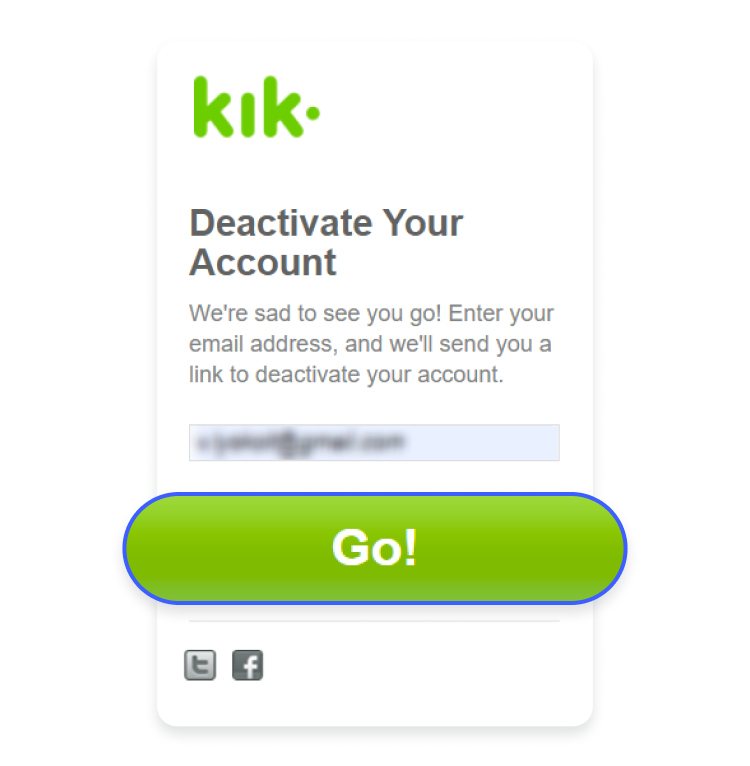

Step 4
Check your inbox. You should have received a deactivation email.

Step 5
Open the email and click the link inside to deactivate your account.


You’re all done — your Kik account has been deactivated. You can fill out the questionnaire, but it’s not required.
So what is the difference between deactivation and deletion? When you deactivate Kik, you stop receiving all correspondence from the app, nobody will be able to find your username, and you won’t appear in contact lists. However, your Kik account doesn’t get permanently deleted and will reactivate if you sign in again.
How to deactivate or delete your Kik account without email
If you no longer remember your email address, you won’t be able to delete your account in the usual way. In this case, you could contact Kik support for further guidance.
Can I delete my Kik account from the app?
You cannot delete your Kik account from the Android or iOS Kik apps. Instead, you must go through the browser site. As described above, you will also need to have access to your email to do so.
How to delete or deactivate your kid’s Kik account
If you wish to delete your child’s Kik account, you can contact the company and make a request. You can also submit a deactivation inquiry by sending a message to safety@kik.com with the subject line “Parent Inquiry.” In the message, you will have to specify the reason for deletion and list your child’s Kik username and email. A Kik representative will get back to you shortly.
However, you will still need to know the username and email address your child used to create an account. You can find this information by logging into their Kik account and clicking the gear icon in the top-left corner. There you can see your child’s display and user names.
You can also delete it via the before-mentioned Kik form. You just need to have access to the email account of your kid’s Kik profile.
Also, keep in mind that you can’t monitor your kids’ Kik conversations from your device as Kik doesn’t share chat content across devices.
What can I do if someone is harassing me on Kik?
If someone is harassing you on Kik, we advise you to do the following:
- Immediately report the harasser by sending a message to safety@kik.com. This will get you in touch with Kik’s Safety Center that will handle your situation. You can also easily report a bully in the Kik app by following the user-blocking instructions given below. You just have to choose the “Report User” option instead of blocking.

- Terminate all communication with a harasser. By no means provide them any personal info or agree to meet them in person.
- Immediately inform your parents or guardians if you are underage.
- In more serious cases, inform the local cyber police.
We also advise you to block an annoying user. You can do it by:
- Navigating to a chat you had with them.

- Clicking on the username of your friend on the top of the chat.

- Tapping the three vertical dots in the top right corner.

- Clicking on the “Block” option and confirming your choice.

If you wish to unblock a user, just navigate to the “Block List” in Kik’s privacy settings and unblock them by clicking on a specific username.
How can I delete Kik messages between another user and me?
Kik deletes old messages automatically once you exceed the maximum number of them. But if you wish to delete your recent messages, you should:
- Open the chat.

- Select the message you wish to delete.
- Long press on it and tap “Delete.”

If you wish to delete an entire conversation:
- Click on the username of your friend on the top of the chat.

- Tap “Delete Chat.”

Just keep in mind that this method deletes messages only on your side as Kik stores messages in its cloud, and it’s not possible to delete them on both sides.
Kik alternatives
Here are some Kik alternatives worth considering:
- JusTalk Kids. JusTalk Kids is an app for kids to make video calls and send messages. Parents can set a password for their kids and control their access. Moreover, the app doesn’t allow strangers to contact kids on the app. Parents can also easily delete specific contacts at any time.
- Fennec Messenger. Fennec Messenger is another option worth considering. Similarly to JusTalk, it prevents strangers from reaching out to your child. Also, it has an integrated phone locator to help you track a child’s device in case of emergencies. There is also a handy time restriction feature, limiting the number of hours that can be spent on the app.
- Stars Messenger. Stars Messenger is a cute-looking, user-friendly app for your kids. Again, no strangers can connect to your child on this service. You can also set up private groups and create a safer environment for your children.
Kik with a VPN
If you still wish to use Kik, at least make yourself and your kids safer. As mentioned above, Kik doesn’t have a very good privacy record. It doesn’t use end-to-end encryption, so service providers can monitor your conversations, while cybercriminals can intercept them. Your IP and geolocation are also visible to the company.
So VPN is your friend here. It will encrypt your traffic and no one will be able to intercept it. Moreover it will hide your original IP, so your location won’t be visible to anyone.
